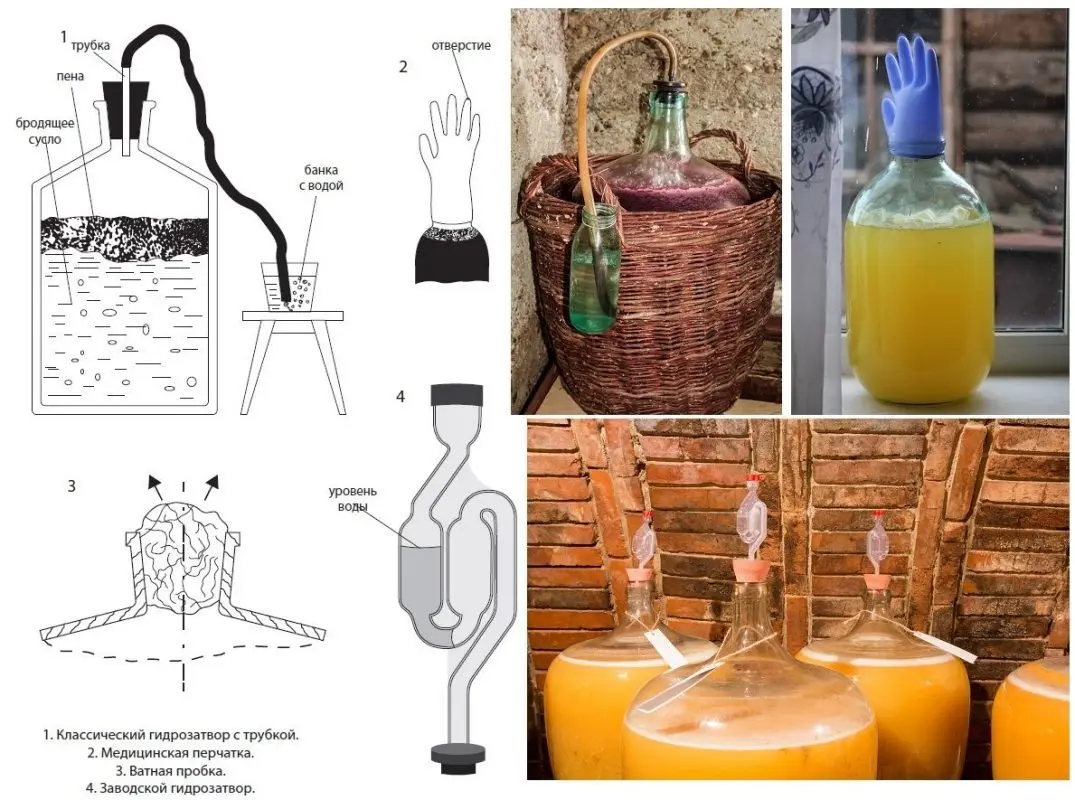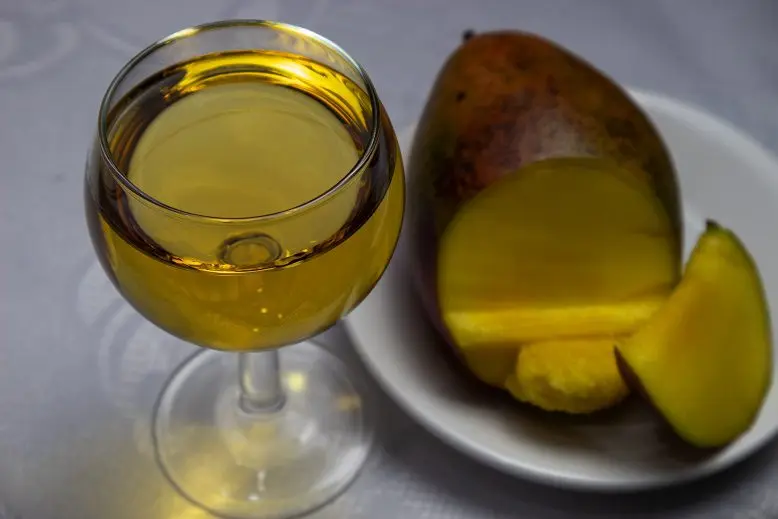Homemade mango wine is an exotic drink of yellow or orange color with a characteristic smell of fruits and a slight astringency in taste. For cooking, both fresh ripe mangoes (preferred option) and canned pulp are suitable.
It is important that all raw materials are white without signs of spoilage, rot and mold. Even a small amount of bad pulp can ruin an entire batch of wine. In order not to infect the wort with pathogenic microorganisms, before using the container, rinse with boiling water and wipe dry with a clean, dry cloth, and raw materials can only be handled with well-washed hands.
Ingredients:
- mango pulp (fresh or canned) – 1 kg;
- water – 1,6 liters;
- sugar – 0,8 kg;
- citric acid – 5 grams per 1 liter of must;
- sourdough or wine yeast – per 3 liters of must.
Mango does not contain wild wine yeast (the surface is treated with a preservative for long-term storage), so be sure to have store-bought wine yeast or prepare a starter from raisins or berries a couple of days before setting the must. Concentrated citric acid can be replaced with freshly squeezed lemon juice – one medium-sized lemon contains 5-6 grams of acid.
mango wine recipe
1. Peel fresh fruits and remove seeds.
2. Grind the pulp (canned with juice) in a blender or meat grinder to a homogeneous consistency that will resemble applesauce.
3. Transfer the resulting mixture to a non-metallic (plastic or stainless steel) container with a wide neck – a bowl, pan or bucket. Add all the water and 50% sugar (400 grams per recipe). Add citric acid (5 grams per liter of must obtained) and wine yeast (raisin starter).
4. Stir to a homogeneous consistency, bandage the neck of the container with gauze, transfer the wort to a dark room with a stable temperature of 18-28 °C. Leave for 4 days. Stir every 8-10 hours, drowning the pulp in the juice – particles of pulp that have floated to the surface.
4-10 hours after adding the starter or yeast, foam should appear and hiss should be heard, which means that everything is going fine.
5. Strain the wort through gauze folded in 3-4 layers, squeeze the cake to dryness (no longer needed).
6. Add 25% sugar (200 grams according to the recipe) to the filtered fermenting juice, mix and pour the wort into the fermentation tank, filling it with a maximum of 75% of the volume, so that there is room for another portion of sugar and foam.
7. Install a water seal of any design on the neck of the container; you can attach a medical glove with a hole in one of the fingers (pierce with a needle).

8. Transfer the future mango wine to a dark room (cover with a thick cloth) with a stable temperature of 20-28 ° C.
9. After 8 days from the date of installation of the water seal, add the remaining sugar – 25% (200 grams). To do this, pour 200 ml of fermenting juice into a separate container, add sugar, mix, then pour the resulting syrup back into the fermentation container and close with a water seal.
Depending on yeast and temperature, homemade mango wine will ferment for 35-60 days. The readiness is indicated by the absence of bubbles from the water seal (deflated glove), a layer of loose sediment and a significant clarification of the wort.
If fermentation has not stopped after 50 days from the date of installation of the water seal, so that bitterness does not appear, the wine must be drained from the sediment and allowed to ferment at the same temperature.
10. Pour the fermented young wine into another container through a straw, trying not to touch the sediment at the bottom. Taste the drink, if desired, add more sugar for sweetness and (or) fix with vodka (alcohol) in an amount of 2-15% of the volume of wine. Fixing promotes storage, but makes the taste tougher.
11. Pour the wine into aging tanks, taking care to fill to the neck to minimize contact with oxygen during storage. Close hermetically.
12. Transfer the wine for maturation to a refrigerator or cellar with a temperature of 2-16 °C. If sugar was added for sweetening, it is better to keep the first 7-10 days under a water lock in case of repeated fermentation. Leave for at least 6 months (preferably 9-10).
13. When a precipitate appears with a layer of 2-4 cm, filter the drink by pouring it into another container.
Attention! Initially, mango wine is very cloudy, it takes at least 4-5 months for a more or less normal clarification, you can also use bentonite.
14. When sediment no longer appears, the cooking process is complete. Wine can be bottled for storage and hermetically sealed.
When stored in a refrigerator or cellar, the shelf life of mango wine is up to 3 years. Fortress – 10-14%.










